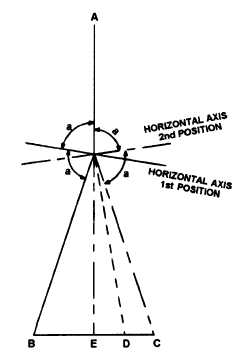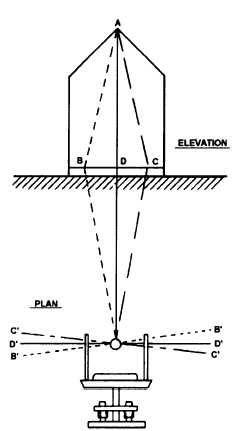Figure 6-6.—Adjusting the line of sight.
4. Repeat this process until the condition is
connected.
NOTE: To compensate for the above maladjust-
ment, use only that part of the vertical hair that is closest
to the horizontal cross hair.
ADJUSTING THE LINE OF SIGHT.— In a
perfectly adjusted telescope, the line of sight should be
perpendicular to the horizontal axis at its intersection
with the vertical axis. To make the line of sight
perpendicular to the horizontal axis (fig. 6-6), you
should proceed as follows:
1. Sight on a point, A, at a distance of not less than
200 feet with the telescope normal; clamp both plates.
2. Plunge the telescope and set another point, B, on
the ground at a distance from the instrument equal to the
first distance and at about the same elevation as point A.
3. Unclamp the upper motion, rotate the instrument
about its vertical axis, sight on the first point (telescope
inverted), and clamp the upper motion.
4. Plunge the telescope and observe the second
point. If the instrument is in adjustment, the point over
which it is set will be on a straight line, AE, and point B
will fall at position E. If the instrument is not in
adjustment, the intersection of the cross hairs (point C)
will fall to one side of the second point, B.
Figure 6-7.—Adjusting the horizontal axis.
5. Measure the distance BC and place a point, D,
one fourth of this distance back toward the original
point, B.
6. Move the cross-hair reticle horizontally by
loosening the screws on one side of the telescope tube
and tightening the opposite screw until the vertical cross
hair appears to have moved from C to the corrected
position, D.
7. Repeat this operation from number 1 above,
until no error is observed.
8. Repeat the test described for adjusting the
vertical cross hair, since the vertical cross hair may have
rotated during this adjustment.
NOTE: You can compensate for the above
maladjustment by double centering (discussed in the
EA3 TRAMAN).
ADJUSTING THE HORIZONTAL AXIS.—
When you plunge the telescope, the line of sight should
generate a truly vertical plane. For this to occur, the
horizontal axis of the telescope must be perpendicular
to the vertical axis. To make the horizontal axis of the
telescope perpendicular to the vertical axis (fig. 6-7),
you should perform the following steps:
6-7




